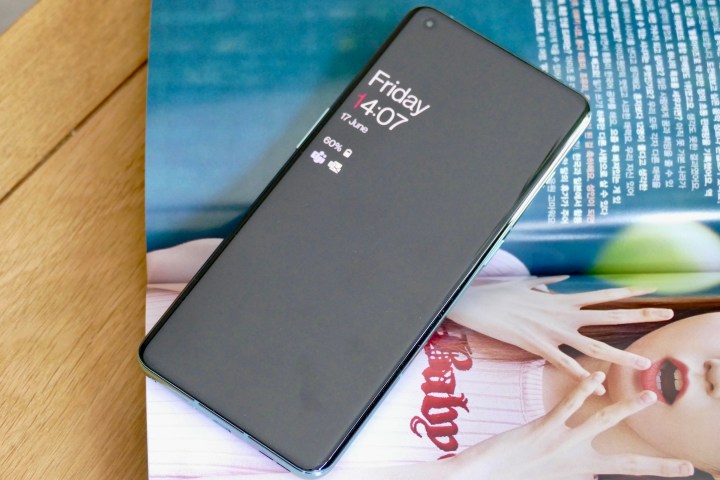The most powerful 12GB/256GB version of the OnePlus 10 Pro is now available to buy in the U.S. and at a tempting price. But our review noted the software isn’t always as stress-free as some of its rivals. Does this mean the phone should be overlooked? I’ve lived with the OnePlus 10 Pro since its release, and during that time, the software has calmed down and (mostly) lets me get on with life. As part of this, some of its more helpful everyday features and ability have also come to the forefront.
Here are four ways the OnePlus 10 Pro has become a comfortable smartphone partner, along with one way it still can’t quite keep up with the competition.
Excellent haptics
OnePlus has always done haptic feedback very well, and the OnePlus 10 Pro continues that tradition. It may not immediately sound like something that makes the phone easy to live with, but because it gives the phone such a pleasant, almost friendly demeanor, it increases the pleasure you get from interacting with it. And that’s an important (yet often overlooked) part of the ownership experience.
It gets the default setting right and doesn’t nudge you to change it.
What makes them so good? They’re tactile and subtle. Because of this, OnePlus can use them liberally throughout the operating system and it doesn’t become annoying. The OnePlus 10 Pro has one of the few keyboards that benefit from haptics, and I like the way you get a bump when you scroll all the way to the end of the app drawer.
There’s the right amount of customization, too, with the option to have a Crisp or Gentle feel and to adjust the intensity. OxygenOS isn’t lacking in customization options, and like Oppo’s ColorOS, it can be overwhelming and add unnecessary complications. Except with the haptics — which OnePlus calls O-Haptics, just like Oppo — it gets the default setting right and doesn’t nudge you to change it.
A useful always-on display
My advice here is to ignore the endless customization options for the always-on screen and stick to the basic, default digital clock. Everything is there at a glance — the time, day, date, notification icons, and battery percentage. It ties into the classic OnePlus red-and-white color scheme by highlighting the first number of the time in red, so it doesn’t just feel like another Oppo phone.

The scheduler is helpful, and I do use the Horizon Light feature, where the edge of the screen glows for a moment when a new notification arrives. It grabs my attention, and the clear, obvious icons tell me what I need to know. Having all the information on the screen is very helpful, but what I like the most is what happens when a notification arrives.
Unlike some always-on screens, the icon doesn’t just show up with no meaning behind it. Instead, it’s accompanied by a quick glimpse at what the message is. I find this reduces the number of times I unlock my phone to check an email because I can instantly see if it’s something that needs a quick response or not. However, the irritating bug where it doesn’t always show the latest notification at this time, unless I manually clear them, still persists. This aside, the OnePlus 10 Pro’s always-on screen simplifies my everyday online life.
The lovely Alert Slider
I’m going to sound like a broken record here, as I mention it in most OnePlus phone reviews, but the Alert Slider is brilliant. It has been a OnePlus feature since the very beginning, and it once defined everything that was great about the brand’s smartphones. The Alert Slider is simple to use, genuinely helpful, and not something you find on any other big-name phone. The closest you get is Apple’s Silent mode switch on the iPhone, but even this doesn’t have the same level of functionality.

Slide it up to shift from Ring to Vibrate, and again for Silent mode. The button has a lovely grippy texture, and each movement is accompanied by a subtle but noticeable vibration. When the OnePlus 10 Pro is in my pocket, I often find myself absentmindedly switching between modes just to feel the button and vibration under my thumb.
But it’s not just about tactility. The feature is genuinely helpful, especially as volume controls in Android are quite complicated — featuring sliders for this and buttons for that, and often annoying to actually locate. The Alert Slider makes my phone ring, vibrate, or keep quiet when I want it to, with no need to interact with the screen or tap multiple buttons to enter a detailed volume menu. It’s excellent.
Fast (and safe) security
Getting the security right isn’t always easy, but the OnePlus 10 Pro nails the most important aspect — speed. The fingerprint sensor is set an inch or so above the bottom of the phone’s screen and is easy and natural to locate. Even more important, it hasn’t failed to recognize my thumbprint once. It even has a lovely bit of haptic feedback to go along with the unlocking process. Likewise, the face unlock is speedy and accurate.

I had to practice getting the fingerprint to unlock to reliably and quickly work on the Pixel 6 and Pixel 6 Pro, and not all Samsung fingerprint sensors are winners. The OnePlus 10 Pro shows them all how to get it exactly right. I want my phone protected, but if biometrics are slower than entering a PIN, then something is wrong. There’s nothing like that here.
The one thing holding the OnePlus 10 Pro back
The above four points really stand out when you use the OnePlus 10 Pro on a daily basis, as each streamlines a basic process or common feature, making the phone a likable and convenient device to live with. There is one feature, however, that’s still not quite to the level I want from my ideal everyday phone. That’s the camera performance.
While a recent test shows the OnePlus 10 Pro’s Hasselblad-tuned camera is a step forward when compared to older OnePlus phones, it still struggles to do what I want, and when I want. The camera app is often slow to respond, especially after swapping between the main, wide, and telephoto lenses. Doing this requires waiting a few seconds to take the photo after pressing the shutter button, often resulting in missed shots.
Worse, the results are too inconsistent to rely on. The telephoto camera is particularly problematic. The low megapixel count makes photos look low quality, and I’ve barely used it because of this. For the main camera on bright, sunny days, the color balance and dynamic range are variable. Some photos simply don’t replicate what I saw with my own eyes and fall behind photos taken with other phones.
It’s not terrible, and as you can see in the gallery above, the 10 Pro can take some wonderful pictures with real visual punch. But there’s still work to be done, and I’d really like to see some software updates address the inconsistency.
Is the 12GB/256GB version worth it?
The OnePlus 10 Pro used in our tests is the $969 12GB/256GB model, and it is indeed very fast. However, I’d be surprised if it was noticeably faster or higher performing in normal use than the cheaper $899 8GB/128GB version, so don’t buy it expecting a big upgrade. Instead, buy it for the additional storage space if you think you’ll need it (for example, if you play a lot of the latest, big-name games). There’s no MicroSD card space to expand the phone’s internal storage, so you’ll have to rely on cloud storage if you run out.
Whichever version you choose, the OnePlus 10 Pro is attractive and well-built, plus it has a beautiful screen and the battery consistently lasts me for two days if I don’t play games. Push past the initial “getting to know you” phase where the software is annoying, and it settles down into a normal rhythm, resulting in a phone that’s enjoyable and easy to live with.
Editors' Recommendations
- The OnePlus 12 has one big advantage over Samsung and Apple
- I tried Android 14 on my OnePlus 11 — and I’m not impressed
- How I learned to love the OnePlus 11’s controversial software
- OnePlus Buds Pro 2’s spatial audio makes me want to ditch the AirPods Pro
- I can’t believe how our OnePlus 11 vs. iPhone 14 Pro camera test turned out











